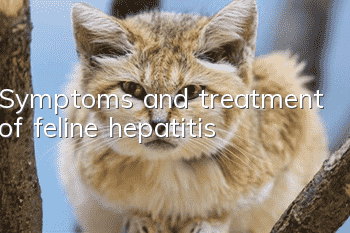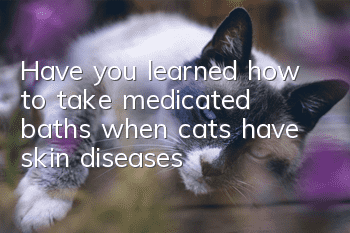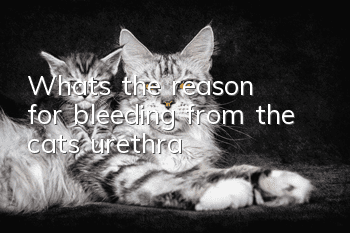Symptoms and treatment of feline hepatitis

Analysis of the causes of feline hepatitis
If feline hepatitis is not treated in time, it will seriously endanger the cat’s health. Cats will have symptoms such as loss of appetite, vomiting, and lack of energy in the early stages of hepatitis. If their skin becomes yellow in the later stages, it is likely to be jaundice hepatitis. So what exactly causes hepatitis in cats?
1. Inferior quality food: many domestically produced grains, etc.;
2. Abuse of drugs: Use large doses of human antibiotics, hormones and other drugs instead of pet-specific antibiotics;
3. Insecticides: inferior flea-killing water, inferior ear mite treatment medicine;
4. Toxic chemicals: excessive disinfectants, etc.;
5. A small part of the liver cell damage caused is caused by bacteria and parasites.
Diagnosis and symptoms of feline hepatitis
1. The cat won’t eat or drink, has no appetite, or wants to eat but won’t eat after looking at it, and will lose weight quickly. The urine is very yellow.
2. The cat vomits and vomits everything it eats, and instead of vomiting hair balls, it vomits yellow water or foam.
3. The cat has no energy, its eyes are dull, and it is not interested in anything. It always lies on its knees instead of lying down to sleep.
4. You are not allowed to touch your stomach. It is probably due to liver pain.
5. Cats have a fever. The fever is relatively high in the evening and at night. The cat is very lethargic and lacks energy. The body temperature is higher than usual, the nose is dry, and the ears are hot.
6. After not eating for 3 days, you find that the cat’s inner eyelids, nose, ears, and belly skin gradually turn yellow. This means that the cat has jaundice, and hepatitis has been confirmed.
Principles of treatment of feline hepatitis
Feline hepatitis has a golden 14 days. When the owner finds that the cat is anorexic and lacks energy, he should be treated as follows in the first 14 days. The cure rate will be 100%. Treatment will be started on the 21st day and the cure rate will be 50%. The treatment will be started after 28 days. Treatment is 10%.
1. Orally take Denosyl, a specific drug for liver disease and hepatitis used in cats in the United States, 2 times a day for the first 5 days, 1 tablet each time, and then 1 tablet a day, taken on an empty stomach. This medicine can help cats repair damaged liver cells, eliminate ascites, normalize bile function, reduce jaundice, and promote cats to eat actively. Generally, after 5 days, the cat will show significant improvement and can actively eat and recover mentally. After taking 1 box in a row, the cat will basically be cured.
2. Hills L/D cats use prescription cans, at least half a day. Owners can dilute the L/D cans with water, fill them with a syringe, and eat less and more meals. When the cat regains its appetite and can eat dry food, it can be fed Hills L/D dry food. If the owner cannot buy it at the momentL/D can be replaced by A/D. The formula of homemade food for cats with hepatitis is as follows: mix chicken liver, cooked rice, and eggs, then steam them. Chicken liver is a good nutritional supplement for cats with hepatitis.
3. If the feeder mainly supplements other nutrients, you can choose taurine, vitamin B, fulmarin, etc., or take some glucose water orally in an appropriate amount. Remember to use it in moderation and do not abuse it. Other medicines and nutritional supplements are, in principle, useless.
- How to solve the problem of cats peeing indiscriminately?
- 10 Tips for Taking Photos of Cats
- What should you pay attention to when using cat hair removal cream? What should you pay attention to when using cat hair removal cream?
- How do Ragdoll cats explode?
- If a cat hasn’t been bathed for several years, what dangerous bacteria could there be?
- Why do mother cats keep licking their babies?
- Can stray cats be raised?
- How to reconcile with a cat that hates you?
- What causes tongue ulcers in kittens?
- What are the advantages and disadvantages of Siamese cats’ personalities?



